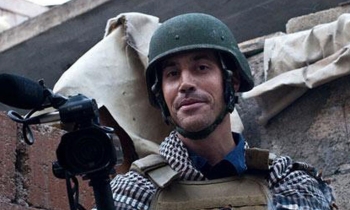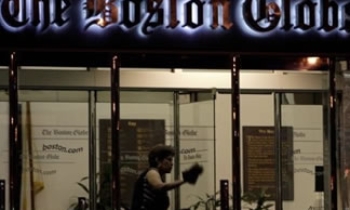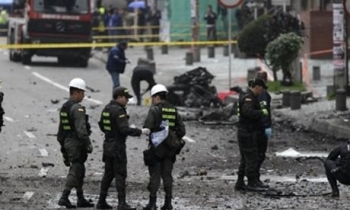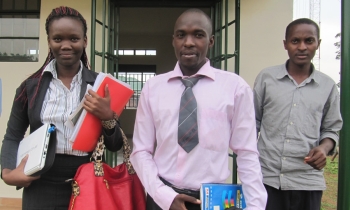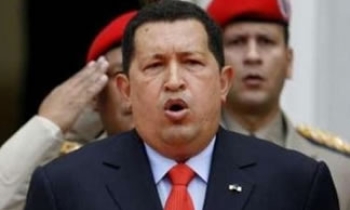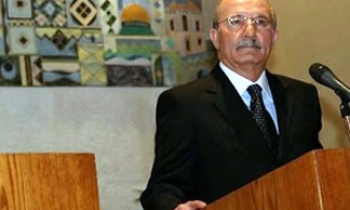The nondescript town of Oaxaca, about 520 km southeast of capital Mexico City, has been gathering a lot of international media attention for all the wrong reasons.
Three distributors of the newspaper El Imparcial del Istmo were attacked and shot dead on October 8 on a highway in Oaxaca, following weeks of threats made to the paper, the National Centre for Social Communication (Centro Nacional de Comunicación Social, CENCOS), ARTICLE 19, and the Committee to Protect Journalists (CPJ) have reported.
Mateo Cortés MartÃnez, AgustÃn López and Flor Vásquez López were driving in a vehicle bearing the paper's logo when they were chased down by an SUV and gunned down at close range.
"It is clear that the target of the attack is the newspaper. The van was identified with the newspaper logo, and they were carrying credentials," said BenjamÃn Fernández, general director of El Imparcial. "It is not safe for us to continue working under these conditions."
According to CPJ, the paper's regional director, Gonzalo DomÃnguez, received an anonymous telephone call later that afternoon stating he was "next." The threat to him follows several threatening emails and letters to the paper in the past month warning the paper to tone down its coverage of local drug trafficking gangs. El Imparcial has demanded special protection for journalists who have been specifically targeted, as well as a federal investigation.
Journalists at the paper are beginning to resign out of fear. Gonzalo DomÃnguez and crime reporter Felipe Ramos have already quit their jobs. They have received death threats in reprisal for their reporting on the finding of a grave containing seven corpses in the Istmo de Tehuantepec region, according to CENCOS.
DomÃnguez believes he and Ramos were the intended targets of the attack on October 8. The newspaper's editor-in-chief, Luis David Quintana, has announced that management has decided to continue publishing the newspaper, though in reduced form and numbers.
In the last year, reporters and media outlets in the state of Oaxaca have been attacked in retaliation for their critical reporting, CPJ research shows. On August 5, an unidentified assailant shot and wounded journalist Alberto Fernández Portilla outside his home in Salina Cruz and warned him not to “mess with our leader.†Fernández had reported extensively on corruption involving Mexico’s state-owned oil and gas monopoly Petróleos Mexicanos (Pemex) and its local union in Oaxaca.
Another Mexican journalist was shot in the city who had earlier received death threats in connection with his investigation of the killing of a US journalist during violent street protests last fall in Oaxaca. Misael Sánchez Sarmiento, a reporter for the Oaxaca-based daily Tiempo, was shot twice in June by an unidentified assailant outside his home on the outskirts of Oaxaca.
Mexico is one of the most dangerous places for journalists in Latin America, says CPJ. Drug trafficking and organised crime have both become greater problems there in the last couple of years, and reporters who cover these dangerous stories are threatened and killed.
During a mission last summer, ARTICLE 19 confirmed a climate of self-imposed censorship and insecurity endured by media and journalists in the state of Oaxaca. The attacks have demonstrated the inability of federal and local governments to fulfill their obligation to guarantee freedom of expression, particularly as exercised by journalists. ARTICLE 19 called on the federal authorities, especially the Prosecutor Office for the Attention of Transgressions against Journalists, to fully expose the perpetrators of crimes against journalists and their motives.
Those responsible for ensuring citizens' safety in Mexico lead the list of those harassing information professionals, accounting for 42 per cent of the acts of aggression registered, disaggregated by perpetrator as follows: police, 24 per cent; public employees, 12 per cent; public security institutions, 3 per cent; and government institutions, 3 per cent.
The country is the second most risky for journalists. In 2006, there were 131 acts of aggression against journalists — a record high — including 10 murders, which made the last year of Vicente Fox Quesada's period in office as president the most fatal for journalists in the last 15 years. Regrettably, this trend is continuing during Felipe Calderón Hinojosa's administration.

